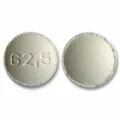Pulmonary Hypertension (PAH)
The right ventricle pumps blood returning from the body into the pulmonary arteries to the lungs to receive oxygen. The pressures in the lung arteries (pulmonary arteries) are normally significantly lower than the pressures in the systemic circulation. When pressure in the pulmonary circulation becomes abnormally elevated, it is referred to as pulmonary hypertension, pulmonary artery hypertension, or PAH.
Pulmonary hypertension generally results from constriction, or stiffening, of the pulmonary arteries that supply blood to the lungs. Consequently, it becomes more difficult for the heart to pump blood forward through the lungs. This stress on the heart leads to enlargement of the right heart and eventually fluid can build up in the liver and other tissues, such as the in the legs.
WHO Group 1: Pulmonary arterial hypertension (PAH)
1.10 Idiopathic PAH (IPAH) - This refers to PAH which occurs at random, without an apparent cause. IPAH can also be referred to as "primary pulmonary hypertension" or PPH, and some older information will still use this term.
1.20 Heritable PAH - The heritable category, formerly called familial, includes two types of PAH.
1.30 Drug-and toxin-induced PAH - Certain drugs and toxins including aminorex, fenfluramine, dexfenfluramine, and toxic rapeseed oil have been associated with the development of PAH.
1.40 PAH associated with other diseases and conditions - This category includes PAH associated with:
- Connective tissue disease (also called collagen vascular disease) - This section includes diseases such as scleroderma (SSC), CREST syndrome lupus (CSR), and others.
- HIV infection
- Portal hypertension
- Congenital heart diseases
 Bosentas - Tracleer (Bosentan) Bsnt1234 $36.00 |






